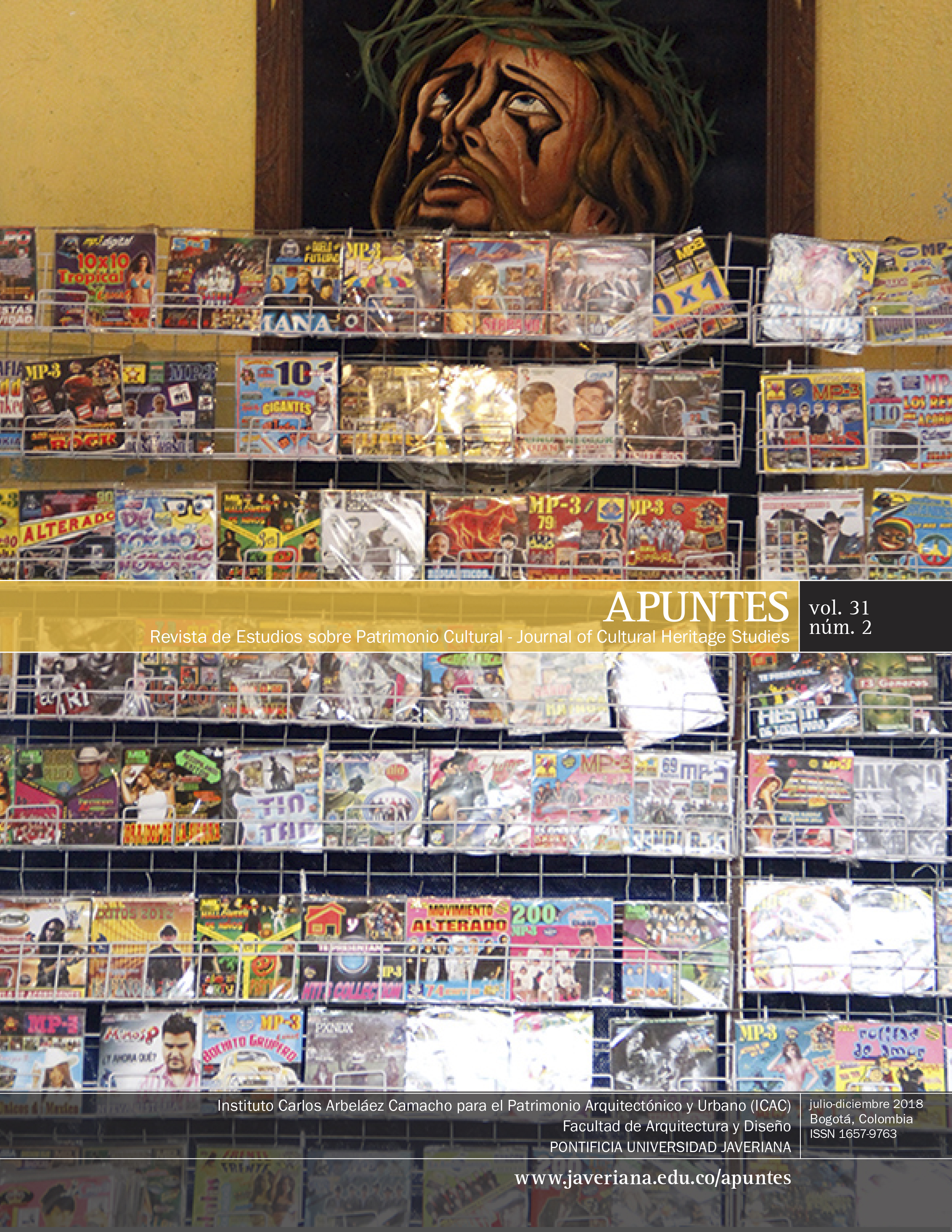Resumen
El texto aborda la arquitectura de los cines en Lima en su formato de sala única entre dos momentos. El primero, el apogeo de la tipología arquitectónica a mediados del siglo XX, cuando los cines construidos en la ciudad alcanzaron su mayor trascendencia urbana, social y constructiva. Tras la debacle de las décadas de los años 1970 y 1980, el segundo momento revisado se sitúa en el pasado reciente y el panorama actual. En las últimas décadas esas antiguas salas han seguido destinos disímiles: el abandono, el cambio de uso o la demolición. Para conectar ambos momentos se presenta el trabajo fotográfico de Antar Giacomotti, quien hacia finales de los años 1950 elaboró un completo registro de fachadas de salas de cine en Lima, material exhibido en una muestra en 2008, donde sus fotos se complementaron con tomas recientes con encuadres similares. Aquellos dípticos evidenciaron el paso del tiempo, la transformación de la ciudad y el preocupante estado de estos edificios en la actualidad. Revalorizar aquel archivo fotográfico permite repensar la importancia de la imagen en la construcción de la historia, así como analizar el presente y el futuro de la tipología.
Archivo Bleuser Boy. Cine City Hall. Recuperado de http://cammp.ulima.edu.pe/edificios/cine-city-hall/
Archivo Heinz Weberhofer. Cine Tauro, Recuperado de http://cammp.ulima.edu.pe/edificios/cine-tauro/
Bendezú, F. (1981, junio). “Los cines mueren de pie. No recomendable para señoritas”. Diario Marka, Suplemento Caballo Rojo 57, pp. 8-9.
Cadelp (1934, septiembre). “El alma de los cines limeños”. Cadelp 17, 12-13.
Dunkelberg, C. (1938, septiembre). “Nuestros edificios recreacionales. El Arquitecto Peruano, 14, s.n.
Eco, U. (1994). La estructura ausente. Introducción a la semiótica. Barcelona: Editorial Lumen.
Edificio El Pacífico (2015). El Arquitecto Peruano, 249-250-251, 17-20. Recuperado de http://cammp.ulima.edu.pe/ficios/edificio-el-pacifico-3/
El Arquitecto Peruano (1943, enero). Puntos de vista… Deficiencias de nuestra arquitectura recreacional. El Arquitecto Peruano, 6.
La Semana Cinematográfica (1944, mayo 13). Entrevista al Sr. Jack Fisher, director-gerente de la Cía. Constructora de Cinemas y Teatros. La Semana Cinematográfica, 711.
La Semana Cinematográfica (1944, septiembre 9). Estuvo en Lima Mr. Murray Silverstone, vicepresidente de la 20th Century Fox. La Semana Cinematográfica, 728, s.n.
La Semana Cinematográfica (1952, agosto 23). Obra progresista y de aliento cumple Discina Peruana S.A. La Semana Cinematográfica, 1037-1038.
La Semana Cinematográfica (1955, octubre). “Añorando tiempos idos…”, 1123-1124.
Martuccelli, E. 2000. Arquitectura para una ciudad fragmentada. Ideas, proyectos y edificios en la Lima del siglo XX. Lima: Centro de Investigación de la Universidad Ricardo Palma.
Mejía Ticona, V. (2007). Ilusiones a oscuras. Cines en Lina: carpas, grandes salas y multicines (1897-2007). Lima: autor.
Municipalidad de Lima (1913). “Sección espectáculos”. Archivo Histórico Municipal. Documento del 24 de noviembre.
Protzel, J. (1995, diciembre). Grandeza y decadencia del espectáculo cinematográfico. Contratextos. Revista de la Facultad de Ciencias de la Comunicación de la Universidad de Lima, 9, 105-109.
Rodríguez, L. (1983). Arquitectura limeña: paisaje de una utopía. Lima: Fondo Editorial del Colegio de Arquitectos del Perú.
La revista Apuntes se encuentra registrada bajo la licencia Creative Commons Reconocimiento 4.0 Internacional. Por lo tanto, esta obra se puede reproducir, distribuir y comunicar públicamente en formato digital, siempre que se reconozca el nombre de los autores y a la Pontificia Universidad Javeriana. Se permite citar, adaptar, transformar, autoarchivar, republicar y crear a partir del material, para cualquier finalidad (incluso comercial), siempre que se reconozca adecuadamente la autoría, se proporcione un enlace a la obra original y se indique si se han realizado cambios. La Pontificia Universidad Javeriana no retiene los derechos sobre las obras publicadas y los contenidos son responsabilidad exclusiva de los autores, quienes conservan sus derechos morales, intelectuales, de privacidad y publicidad.
El aval sobre la intervención de la obra (revisión, corrección de estilo, traducción, diagramación) y su posterior divulgación se otorga mediante una licencia de uso y no a través de una cesión de derechos, lo que representa que la revista y la Pontificia Universidad Javeriana se eximen de cualquier responsabilidad que se pueda derivar de una mala práctica ética por parte de los autores. En consecuencia de la protección brindada por la licencia de uso, la revista no se encuentra en la obligación de publicar retractaciones o modificar la información ya publicada, a no ser que la errata surja del proceso de gestión editorial. La publicación de contenidos en esta revista no representa regalías para los contribuyentes.



